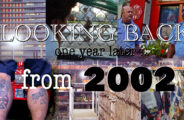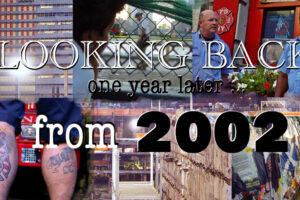The City of Buffalo spends $6 million a year to power all those sodium vapor streetlights that for decades have provided the city with light that’s warm, even and subdued in character.
But with the arrival of municipal LED lighting in other cities across New York state as well as Ontario, residents are wondering what’s taking so long for the city that pioneered street lighting to put this new technology to work and save millions.
They’ve also been critical of National Grid, which has recently paid the city $1 million for overcharges and nonfunctional lights, and there’s still 14 more suits against the utility, said City Comptroller Mark Schroeder.
With LED street lights cutting power costs 50 percent or more, that’s a cool $3 million the city could be saving.
Starting June 1, the hundreds of municipalities that National Grid serves will have the opportunity to get on the first wave of its brand-new LED rollout program.
The news comes as a bit of a surprise.
The LED conversion delays were causing some streetlight industry watchers to consider getting the city to roll out the program on its own. However, significantly complicating matters is the fact that National Grid owns most of the lamp poles, and to buy them out would have been prohibitively expensive at $100 million, they said.
National Grid’s program is being offered on a first-come, first-serve basis, said Western region spokesman Stephen Brady.
“We can do 38,000 of these a year,” he said.
There are about 32,000 streetlights in Buffalo out of 193,000 in National Grid’s service area. “If we did all of them it would take take five years.”
Municipalities that want to convert must first pay off what’s owed on the “cobra head” fixtures that would be replaced.
The energy cost savings would be immediate. However, reports on the aesthetics of LED outdoor lighting are mixed at best.
Brooklynites are going bonkers trying to get to sleep after the city switched over to LED street lighting. The cold, harsh, direct light can penetrate into bedrooms, sending residents running to the local fabric store to buy the heaviest gauge black material they can.
The fact that Buffalo’s a bit behind the curve on LED lighting may work to its favor in this regard.
“LED technology gets better with each iteration,” said Brady.
Some of the glaring differences with high-pressure sodium lights is that LEDs tend to illuminate an area more brightly but with a greater falloff of light outside its core.
However, $3 million in savings a year adds up quickly, so Buffalo needs to make some decisions sooner rather than later if it wants to get in on the LED streetlight parade.
These LED lights are more expensive, though, than your grandfather’s sodium vapors. So the upfront costs may sap some of the initial savings for municipalities.
Brady said the calculations that determine the cost of the changeover are “complicated” and based on a unique set of pole-by-pole factors that would determine the cost to the municipality.
Only “cobra head” street lights will be a part of National Grid’s initial LED rollout program. LED lights for the colonial-style lamps aren’t ready for prime time, Brady said.
Industry watchers have touted the advanced systems that are available in some LED streetlight packages. Features like being able to raise and lower the level of the individual lamp. Or knowing exactly which lights are not functioning.
These will not be available on the first wave of LED streetlights, Brady said. They will simply be LED lights.
If the economics of National Grid’s new LED “tariffs” work for the city, it’s only a matter of time before the look of night gets colder and cheaper.






































